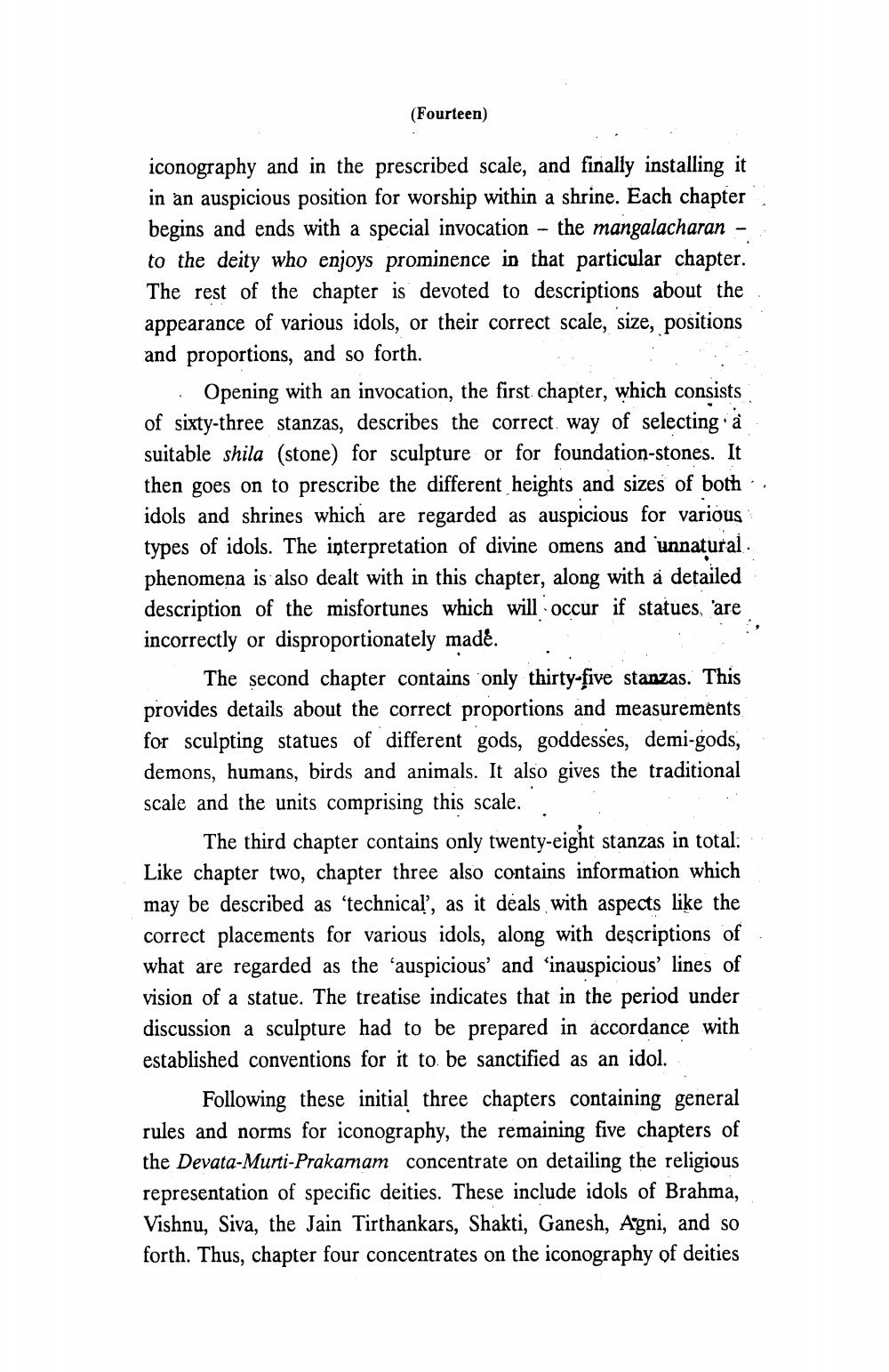________________
(Fourteen)
iconography and in the prescribed scale, and finally installing it in an auspicious position for worship within a shrine. Each chapter begins and ends with a special invocation - the mangalacharan - to the deity who enjoys prominence in that particular chapter. The rest of the chapter is devoted to descriptions about the appearance of various idols, or their correct scale, size, positions and proportions, and so forth.
Opening with an invocation, the first chapter, which consists of sixty-three stanzas, describes the correct. way of selecting a suitable shila (stone) for sculpture or for foundation-stones. It then goes on to prescribe the different heights and sizes of both idols and shrines which are regarded as auspicious for various types of idols. The interpretation of divine omens and unnatural. phenomena is also dealt with in this chapter, along with a detailed description of the misfortunes which will occur if statues, are incorrectly or disproportionately made. .
The second chapter contains only thirty-five stanzas. This provides details about the correct proportions and measurements for sculpting statues of different gods, goddesses, demi-gods, demons, humans, birds and animals. It also gives the traditional scale and the units comprising this scale. :
The third chapter contains only twenty-eight stanzas in total: Like chapter two, chapter three also contains information which may be described as "technical, as it deals with aspects like the correct placements for various idols, along with descriptions of what are regarded as the 'auspicious' and 'inauspicious' lines of vision of a statue. The treatise indicates that in the period under discussion a sculpture had to be prepared in accordance with established conventions for it to be sanctified as an idol.
Following these initial three chapters containing general rules and norms for iconography, the remaining five chapters of the Devata-Murti-Prakarnam concentrate on detailing the religious representation of specific deities. These include idols of Brahma, Vishnu, Siva, the Jain Tirthankars, Shakti, Ganesh, Agni, and so forth. Thus, chapter four concentrates on the iconography of deities




